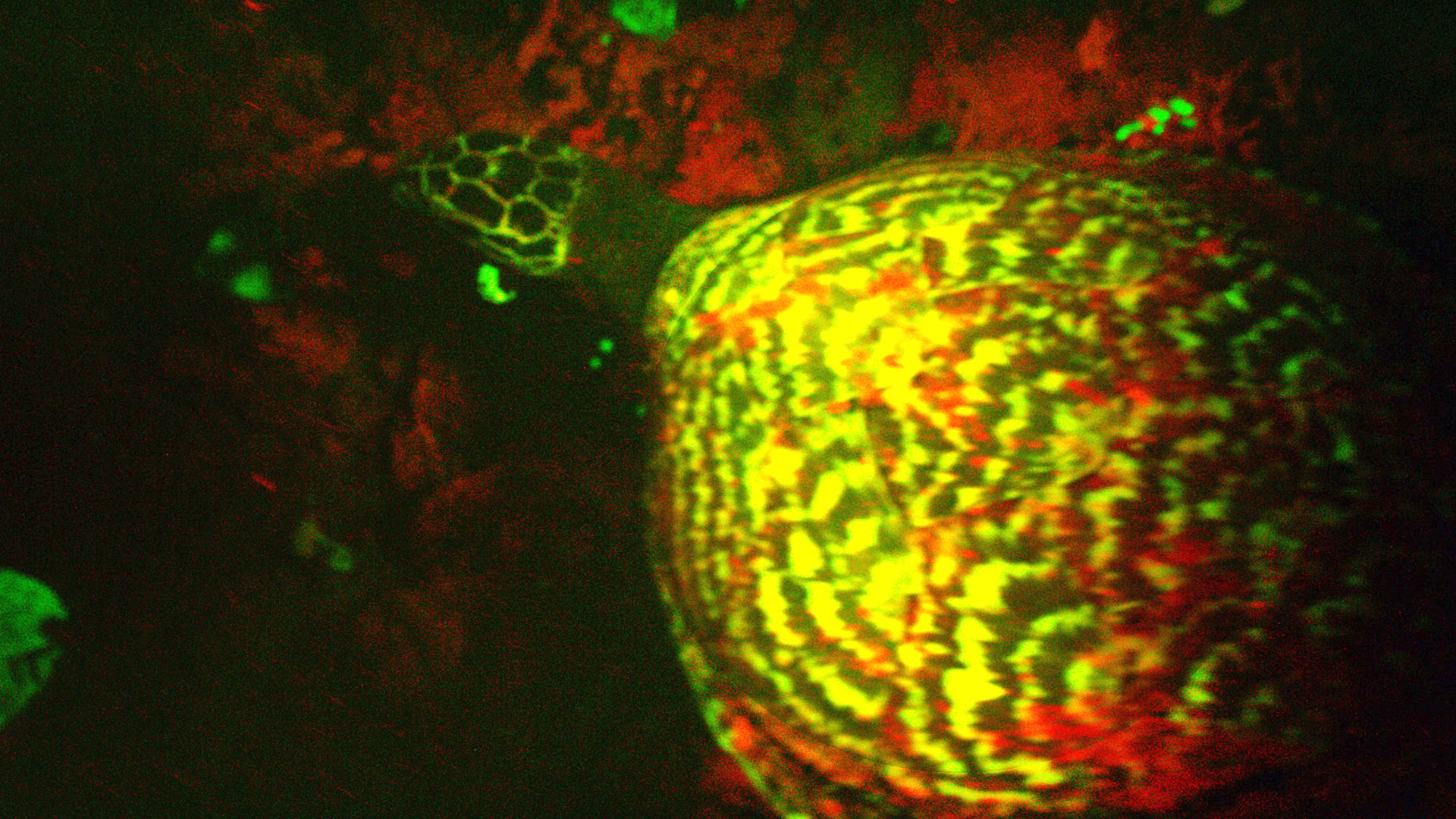
A marine biologist studying coral reefs off the Solomon Islands in the South Pacific made an amazing discovery this week when he noticed a “bright red-and-green spaceship” approaching his way in the pitch dark waters. The glowing underwater body turned out to be a hawksbill sea turtle, a critically endangered species.
While it is known that Hawksbill shells change colors depending on water temperature, the biofluorescent capacities of the marine reptile have never been recorded until now.
The scientist, David Gruber, a National Geographic Emerging Explorer, was on site as part of a TBA21 Academy expedition, an art initiative that enlists artists, curators, and scientists to work on projects related to environmental issues. In 2002, art collector Francesca von Habsburg founded Thyssen-Bornemisza Art Contemporary (TBA21), which has long been dedicated to ambitious projects that defy categorizations.
The Academy has funded similar expedition to Fiji, the Galapagos Islands, Iceland, and the Caribbean Sea, among other places, and it is now gearing up for the launch of its new three-year project: TBA21- The Current.
National Geographic released a video of the groundbreaking discovery yesterday.
In the video, Gruber describes how the discovery was made by chance when the turtle happened into the camera’s view. A yellow filter allowed the marine biologist to pick up the creature’s glowing properties.
“I’ve been [studying turtles] for a long time and I don’t think anyone’s ever seen this,” Alexander Gaos, director of the Eastern Pacific Hawksbill Initiative, who was not involved in the find, told the National Geographic. “This is really quite amazing.”
See the video of the turtle below.